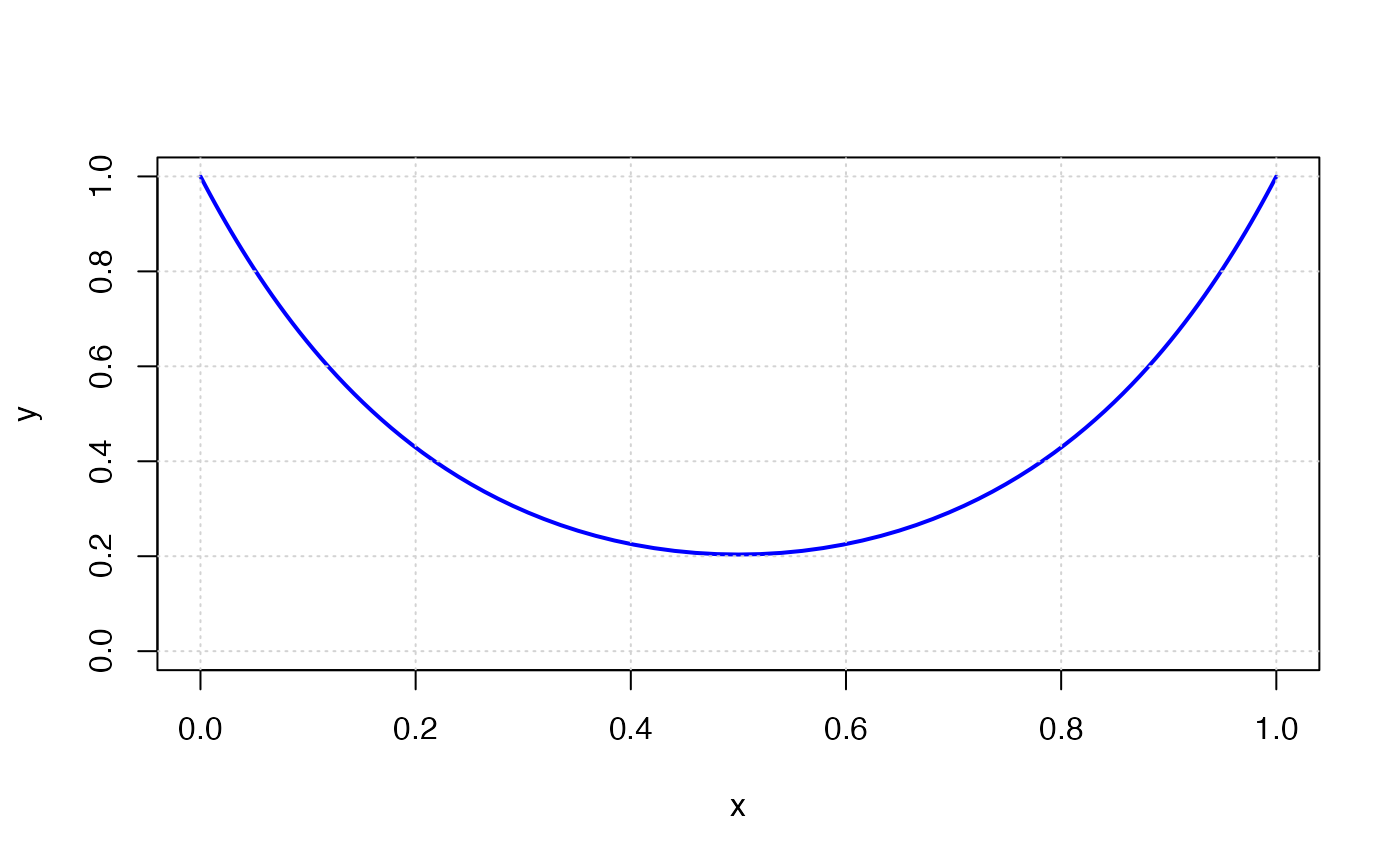The lagged and iterated differences of a vector.
If x is length n, this function returns a length \(n-k\) vector of the \(k\)th order difference between the lagged terms.
diff(x) returns the vector of differences between adjacent elements in the vector, i.e. [x[2] - x[1], x[3] - x[2], ...].
diff(x,1,2) is the second-order differences vector, equivalently diff(diff(x)). diff(x,1,0) returns the vector x unchanged.
diff(x,2) returns the vector of differences [x[3] - x[1], x[4] - x[2], ...], equivalent to x[(1+lag):n] - x[1:(n-lag)].
# S4 method for class 'Expression'
diff(x, lag = 1, differences = 1, ...)Arguments
- x
An Expression.
- lag
An integer indicating which lag to use.
- differences
An integer indicating the order of the difference.
- ...
(Optional) Addition
axisargument, specifying the dimension across which to apply the function:1indicates rows,2indicates columns, andNAindicates rows and columns. The default isaxis = 1.
Value
An Expression representing the kth order difference.
Examples
## Problem data
m <- 101
L <- 2
h <- L/(m-1)
## Form objective and constraints
x <- Variable(m)
y <- Variable(m)
obj <- sum(y)
constr <- list(x[1] == 0, y[1] == 1, x[m] == 1, y[m] == 1, diff(x)^2 + diff(y)^2 <= h^2)
## Solve the catenary problem
prob <- Problem(Minimize(obj), constr)
result <- solve(prob)
## Plot and compare with ideal catenary
xs <- result$getValue(x)
ys <- result$getValue(y)
plot(c(0, 1), c(0, 1), type = 'n', xlab = "x", ylab = "y")
lines(xs, ys, col = "blue", lwd = 2)
grid()
